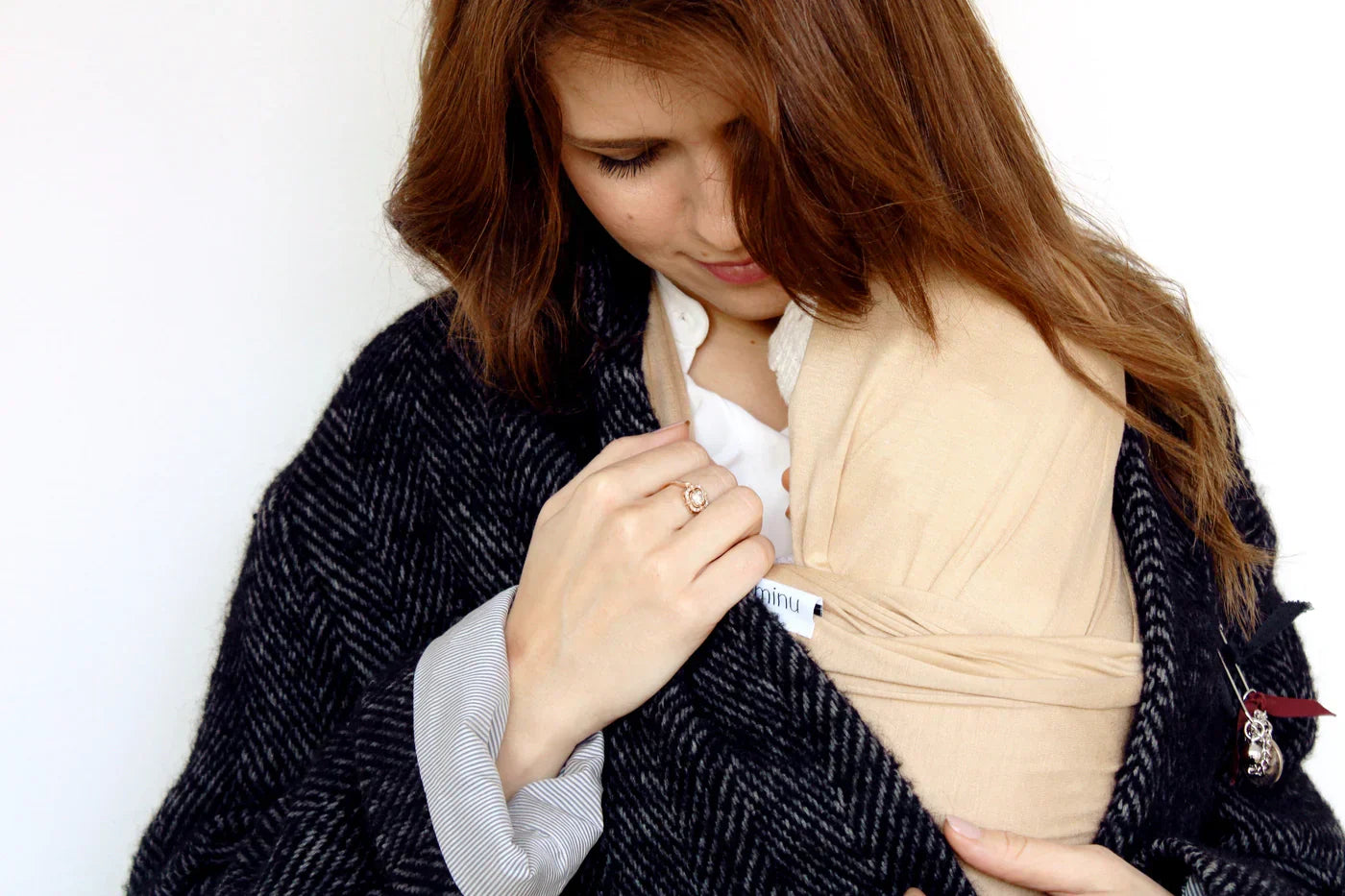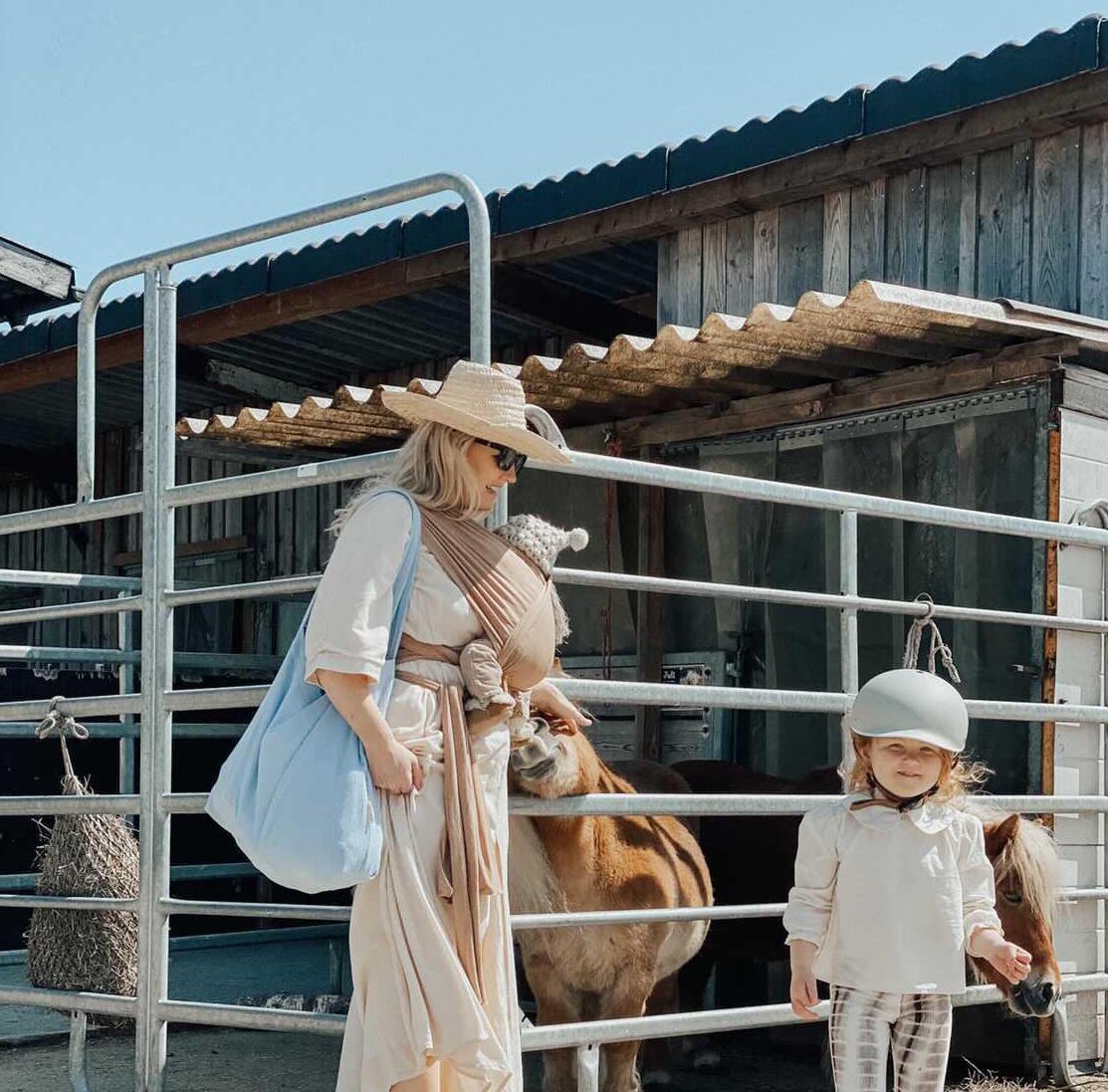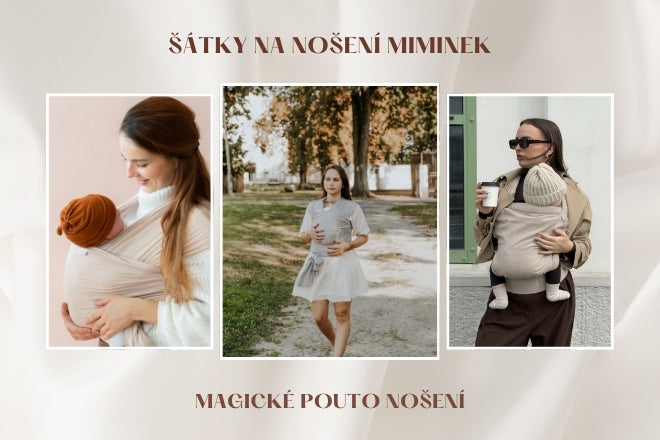
MINU in MINUs Degrees
Why You Don’t Have to Give Up Babywearing in Winter
Summer may have officially ended a few weeks ago, but this October gave us many extra sunny days. With the arrival of November, however, true autumn is here. Frosty mornings, chilly days, and soon maybe even snow—weather that makes you want to stay indoors. You might think it’s no longer possible to wear your baby outside and nostalgically remember the summer, when it was so easy—just tie the wrap and go. But the opposite is true. You don’t have to give up babywearing in winter at all. You just need the right gear!
Keep Those Little Legs Warm
It may seem like we’re starting from the end, but it’s actually the legs that get cold the fastest in a wrap. The rest of the baby is essentially warmed by your body and the fabric, but the legs and head stick out. That’s why good footwear is essential. You don’t need real shoes, especially if your baby isn’t walking yet. Woolen booties or insulated (often waterproof) booties designed for carriers and wraps that reach up to the knees will serve you much better. If you go for the more classic ankle-high option, make sure to add warm leg warmers or pants, preferably woolen, to keep baby warm even in freezing temperatures.
Peek Out with a Balaclava
The other body part that sticks out and needs special attention is the head. When your baby is sleeping, you can easily cover them with a corner of the wrap, but when awake, their head needs protection from the cold. This helps prevent things like ear infections and other winter illnesses. A balaclava is ideal. It protects not only the head but also the neck, which always sticks out a bit from the wrap - especially with curious older babies ☺. There are many materials to choose from, but merino wool has worked best for us. It’s suitable even for very cold weather, it doesn’t itch like regular wool, so it can be snug around the face without irritating the skin or letting cold air into the ears. It’s also highly breathable and wicks away sweat—especially handy if your baby falls asleep in the wrap and you don’t want to wake them by removing their hat. Even when leaning on you, they won’t get sweaty. And if they do sweat a little, the clothing won’t feel cold afterward.
Less is More
Merino wool is also great for the rest of the body in winter. Merino bodysuits and leggings are lifesavers when transitioning between warm indoor spaces and cold outdoor ones, especially when there’s no chance to take the baby out of the wrap. This base layer is crucial. There shouldn’t be more layers between you and your baby in winter than in summer. That’s the only way you can keep them warm with your body heat and also feel whether they’re too cold or overheating. Wrapping a baby in a snowsuit inside a wrap makes it nearly impossible to tell how they’re doing. You may be wondering how to protect your baby from the cold if they’re just in a bodysuit—don’t worry, it’s simpler than it sounds.
Carrier Cover or Babywearing Jacket
There are many outer layers that won’t create unnecessary barriers between you and your baby. One option is an insulated babywearing cover that can be worn with any jacket, keeps your baby warm, and thanks to its clever cut doesn’t let cold air in. These are often made of wool and lined with soft cotton for ultimate comfort for both you and your baby. You can wear it over any coat, jacket, or vest—and so can your partner or even grandma if she wants to try babywearing in winter.
Some prefer babywearing jackets, which have a built-in insert that zips or snaps in the front to make room for the baby. These jackets wrap around both of you, don’t get in the way, and can easily be unzipped when you’re on a bus or in a warm store. The downside is that only you can wear it—unless someone else is the exact same size. Different people prefer different things, so we recommend trying both options.
Too Cold or Too Hot
If you still want to dress your baby warmly inside the wrap, always follow the rule that babies need one more layer than you. Just remember that you won’t be warming each other this way, so it’s better to add layers—you can always take some off. If you go for a snowsuit, make sure it doesn’t have enclosed feet. Those often restrict movement and bend the baby’s toes uncomfortably. Instead, pick a suit that ends at the ankles and add proper booties. To keep them from falling off, add leg warmers over the top. Be careful with zippers, too—they can press into the baby or even scratch them when bent in the wrap. For all these reasons, snowsuits should be your last resort for babywearing in winter.
The Key Is Not to Be Afraid
When you have your baby close to your body, it’s easy to tell whether they’re warm or cold. And it’s no coincidence that they say it’s the mother who needs to dress warmly. You’re the one warming the baby. That’s why babywearing doesn’t have to be replaced by a stroller even in winter—and you can continue enjoying closeness and bonding regardless of the season.



